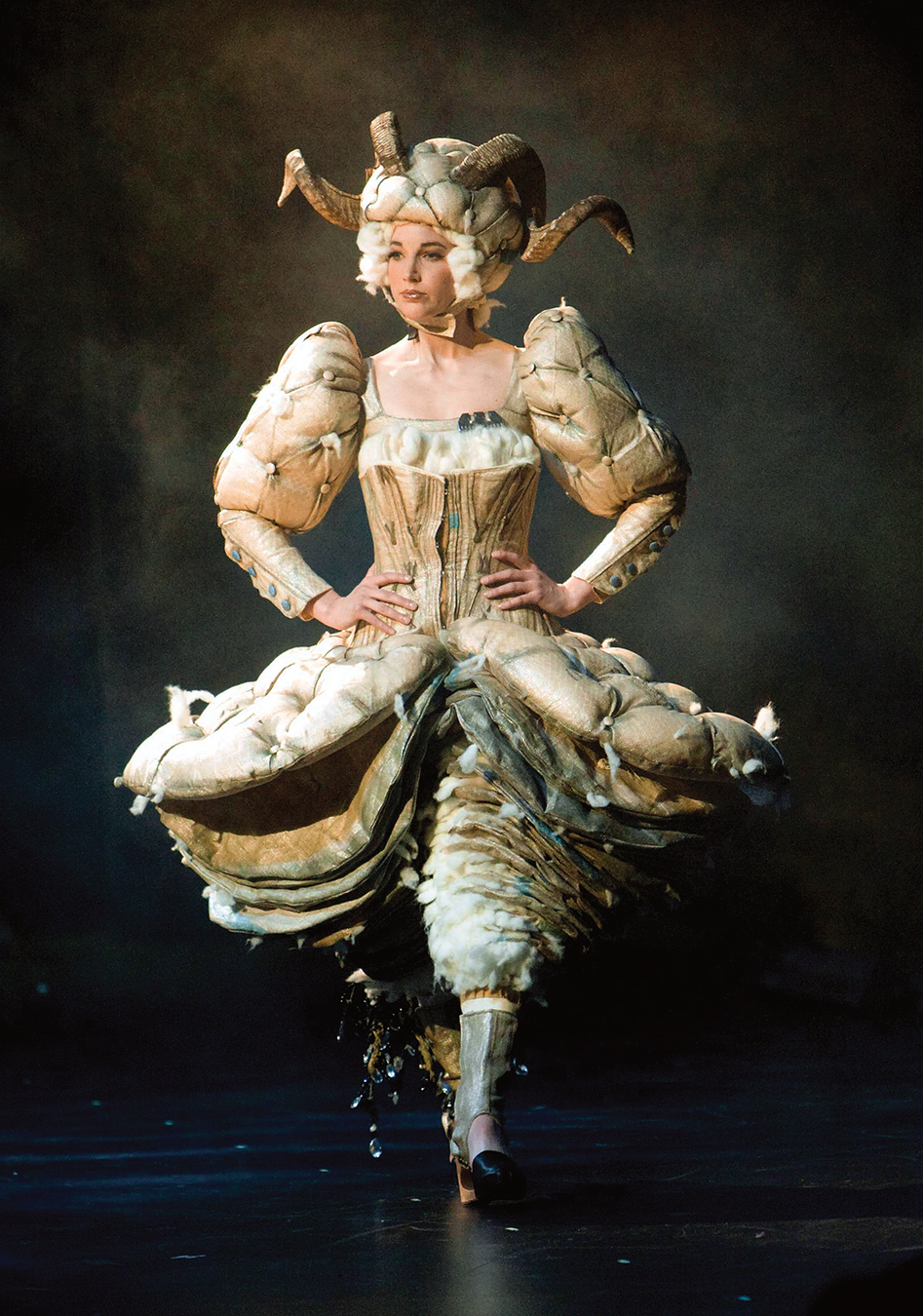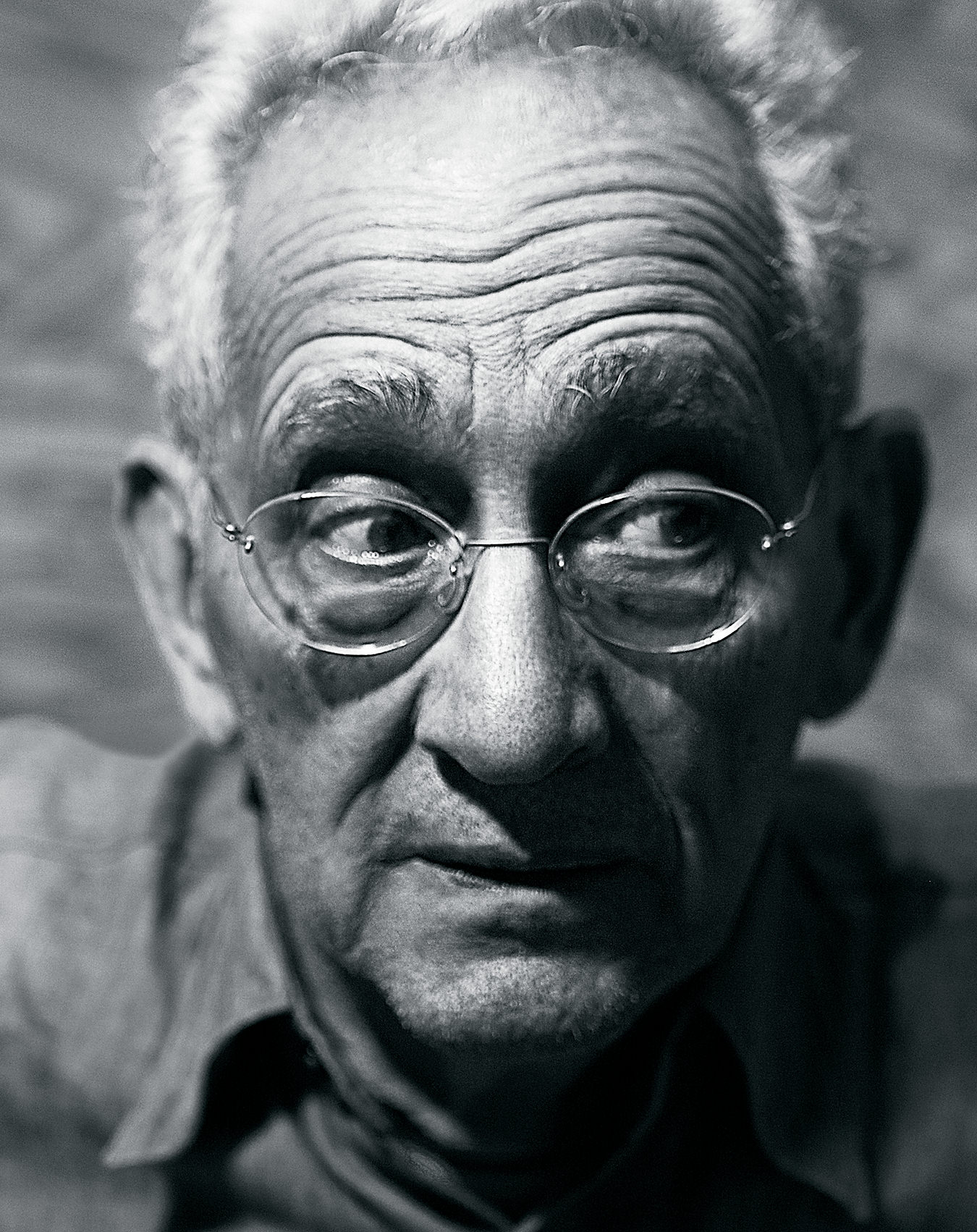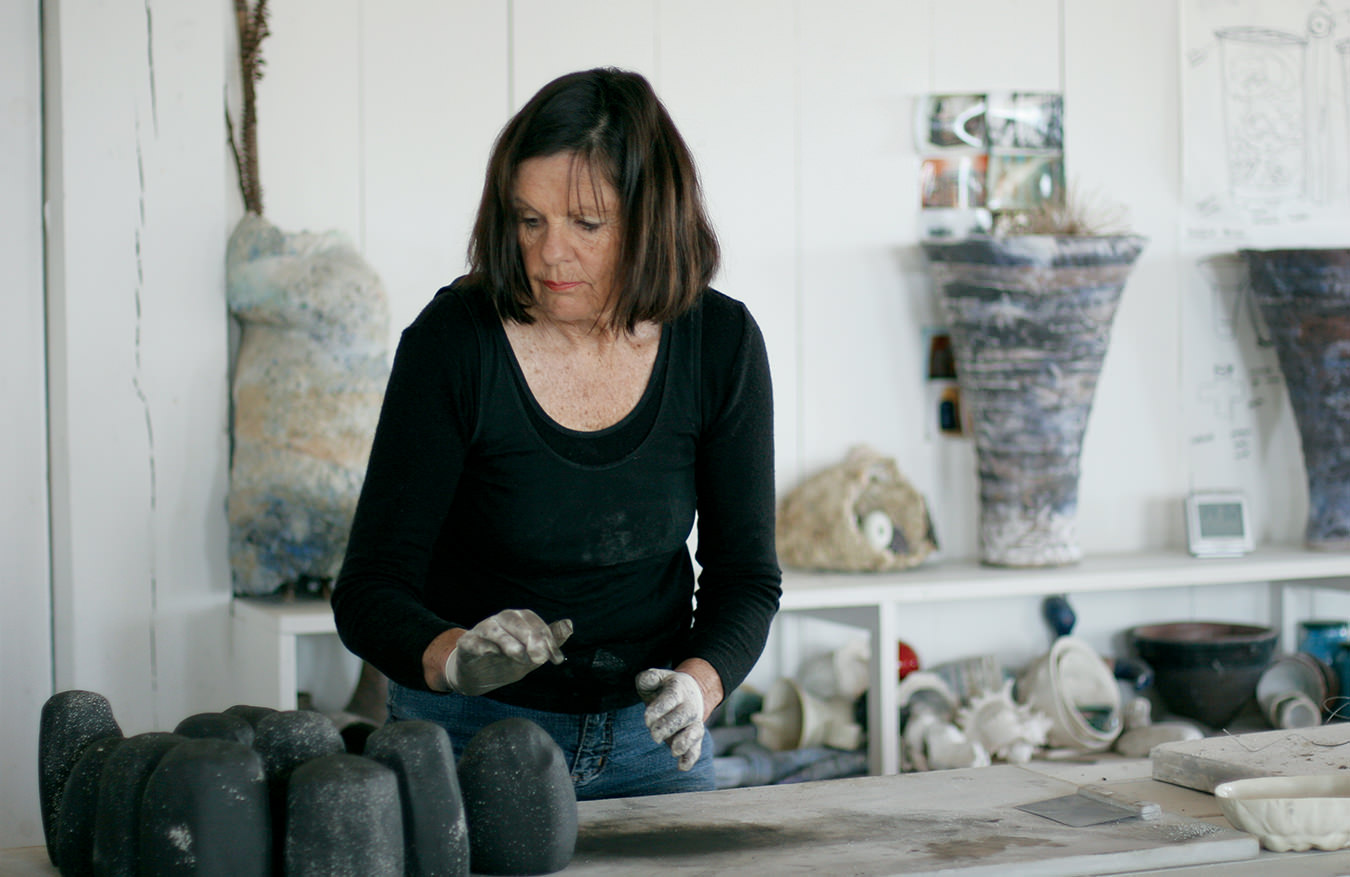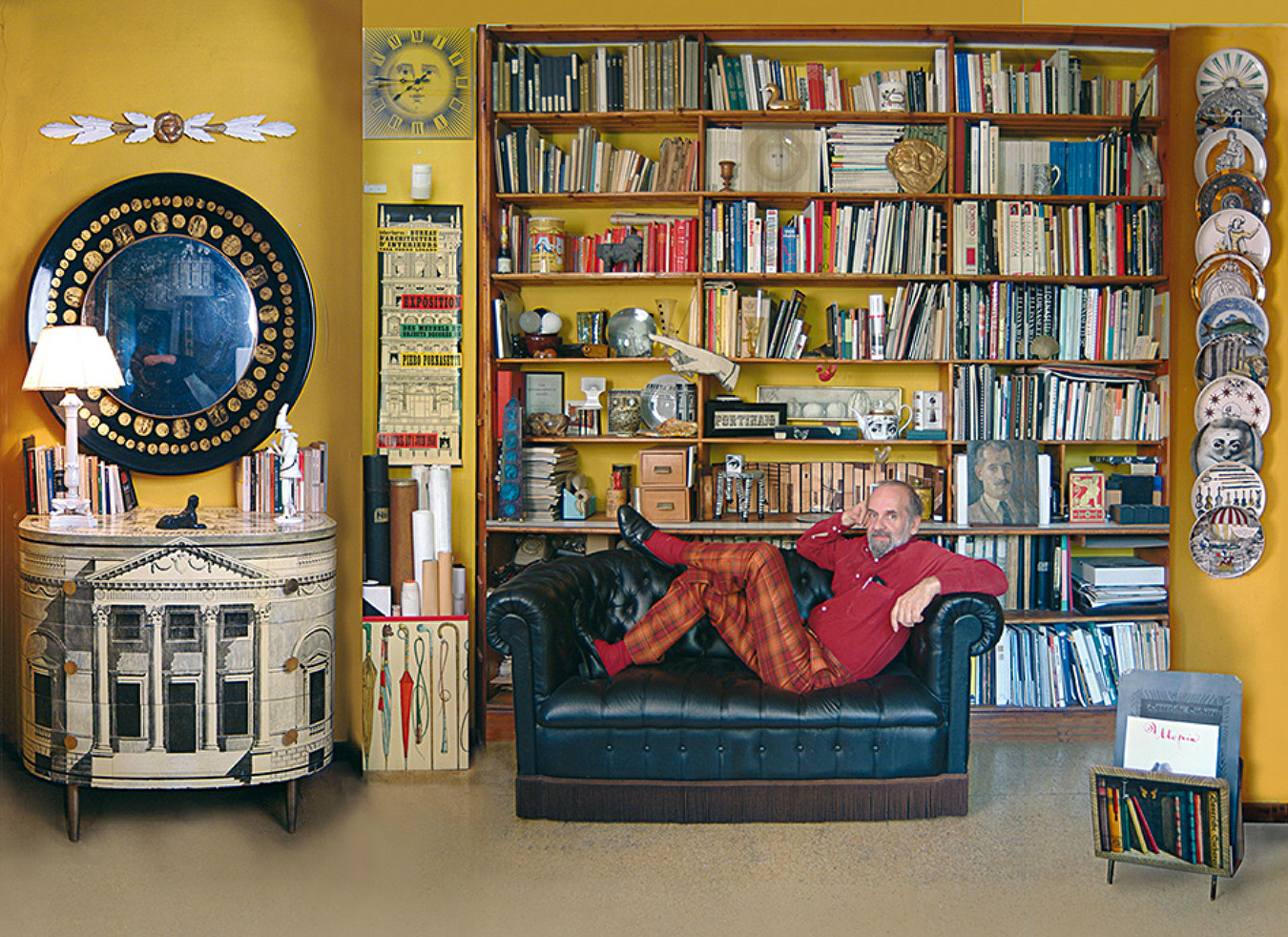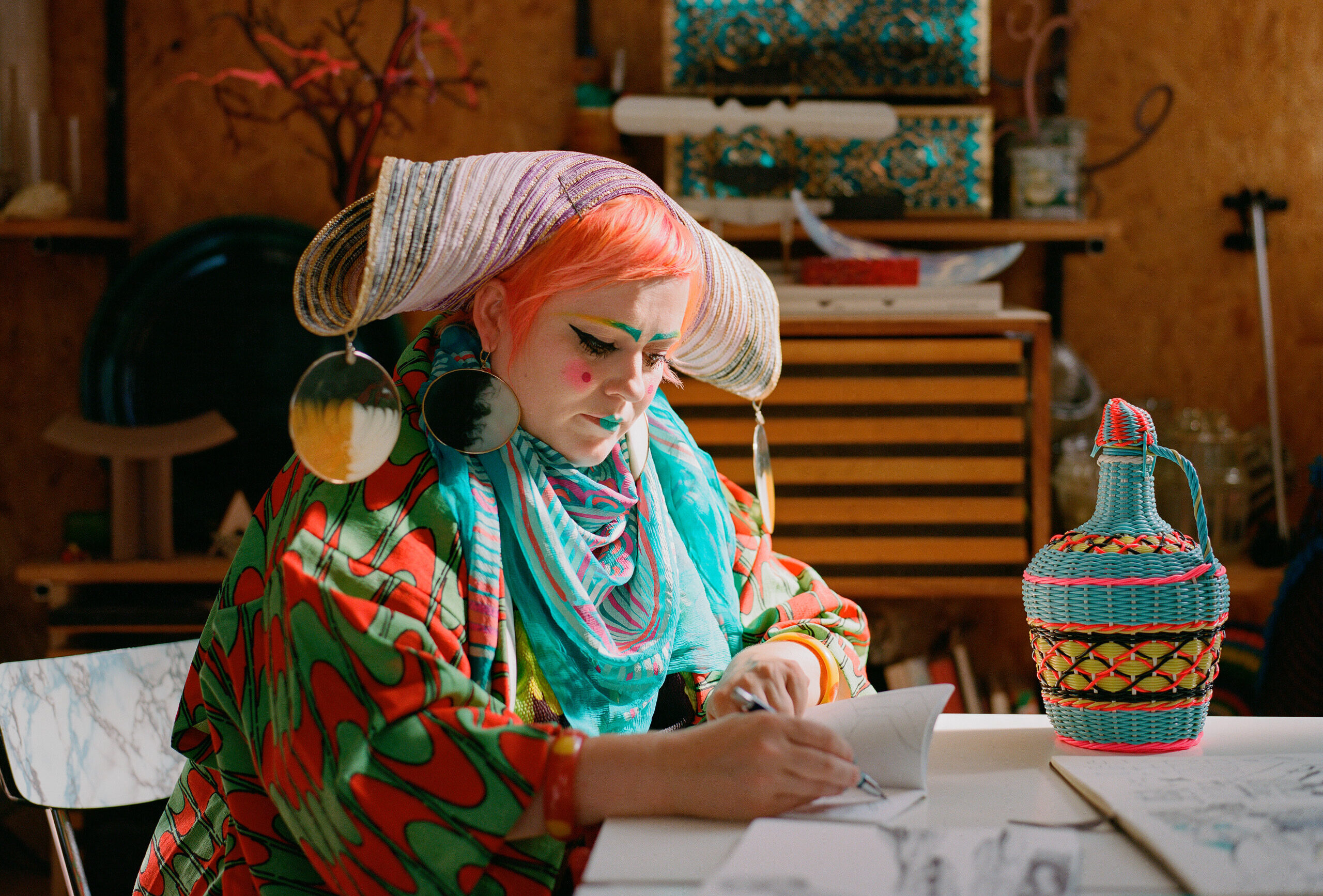
Bethan Laura Wood’s Uncategorizable Artistic World
Art of the everyday.
_________
Bethan Laura Wood is a collector. This is abundantly clear from the very moment you enter her East London studio where found objects fill the shelves in among her own prototypes and finished products. Pattern and colour clutter the space. The studio is a microcosm of Wood’s world, a reflection of her singular creative mind.
Wood has a penchant for the handcrafted and a love of the everyday. She defines herself as a very visual and tactile person, professing that any object could inspire her next project. Her riotous body of work is about pushing the boundaries with pattern and patina. Partnering with a wide range of specialized artisans—the master potters at ceramic firm Linea Sette, British knitwear designer Giannina Capitani, and Pietro Viero, an Italian glassblower—is a core tenet of her process. “I’m probably just greedy,” she admits. “I enjoy trying out different ways of working. This conversation and sort of visual dance between me and the partner is a thing that I really enjoy, so I try to be able to extend on that rather than dancing on my own.”
Over her 15-year career, Wood has danced across several design disciplines, creating everything from tables to textiles to lighting fixtures. Her approach to everyday objects has attracted interest from the fashion, art, and design industries, and has led to collaborations with Perrier-Jouët, Bitossi Ceramiche, Design Miami, and Peter Pilotto. She’s been commissioned by Hermès to create window displays, one of which included The Fruits of Labour, featuring a human-sized melon. Her Tongue Tea Set for the porcelain manufacturer Rosenthal was recently recognized with a number of design awards, including the German Design Award for Excellent Product Design. Some of her work you can sip from while others, like her Toothpaste bag designed for Valextra, you can wear; other pieces you’ll find in exhibitions, including the Victoria and Albert Museum of Childhood, Swiss Institute in New York, and Museum of Contemporary Art, Tokyo. Since 2011, she has been working with the Nilufar gallery.
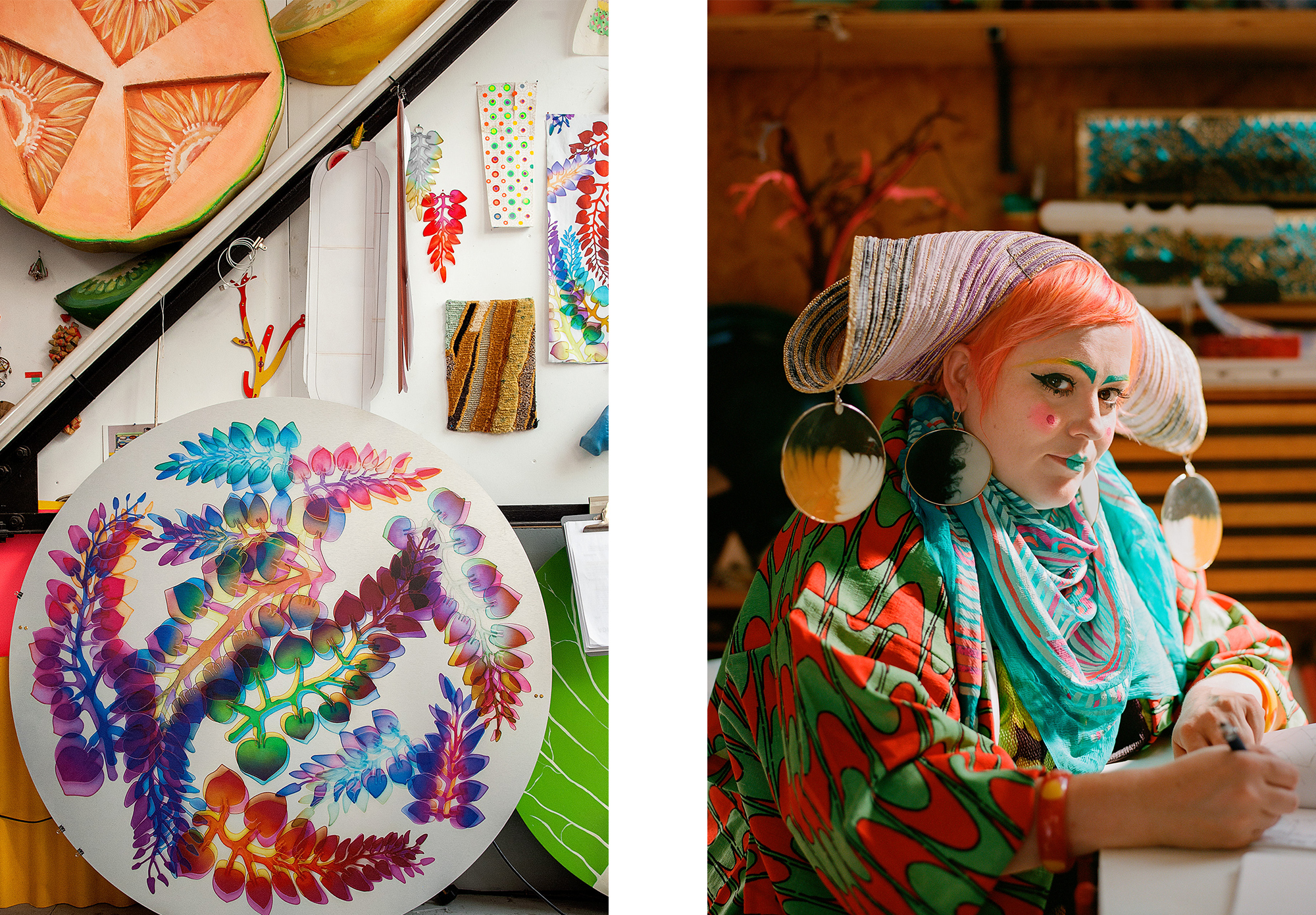
A peek into Bethan Laura Wood’s East London studio, which holds bits of evidence of her kaleidoscopic range of work.
How, as such a varied maker, does Wood situate herself in the vast world of creatives? “It’s a complicated question,” she says. “Within certain spheres, it’s definitely better to be considered as an artist than it is as a designer, so it is something that I am still trying to navigate.” Her background is in the context and critical thinking of design, having studied three-dimensional design at the University of Brighton before obtaining an MA in design products at the Royal College of Art under the tuition of Jurgen Bey and Martino Gamper. “I don’t think that, just because I’m making work that sits more in one world, that it should disassociate from the nuances that it comes from, which is this mix between the design narratives and mass culture narratives,” Wood explains. “It’s everyday objects and what happens when you place them within an art context.” Generally, Wood calls herself a mixed-media creative, which provides her lots of space to play around and dance between disciplines.
Wood’s flamboyant persona often precedes her. “I’ve enjoyed dressing up for myself for a long time,” she says, gesturing to her layers of vibrantly patterned textiles. There was, however, a long period where she rejected the associations between how she looks and what she does. “Everyone would say, ‘Oh, you’re a fashion designer!’ And I’d be like, ‘No, I bang bits of wood together. I just do it in a tutu.’ ” As Wood became “more able to understand how to digest things,” she accepted that there can be a crossover, and that she can use this crossover to bring something more to her work—something personal. During a residency in the Netherlands, for example, she picked up a Bakelite bracelet in what she describes as “a sort of olivy-green,” a colour she associates with her mother. “The teenage rebellion in me was like, bleh,” she says, feigning a look of disgust. “I purposely bought it and started wearing it to see if there was a way I could find my own relationship to this colour.” Through enforced wearing, her association shifted; “it reminds me of my mum, but I’ve also found my own identity with it.”
One could, quite easily, listen to Wood talk about colour all day. She describes single shades with an intensity that’s often reserved for museum-anointed masterpieces: it has taste, it makes sound, it carries weight. In Wood’s world, colour cannot feasibly be separated from its physical form. Green is never just green—and the hue of green she envisions might only be found in bubble wrap or a roll of tape. “It’s fascinating how colour fluctuates depending on the material,” she says. “I think I never quite understood how, for me anyway, you can say you like this colour on a screen, but I have no idea how this colour is going to translate in a material. Or even from my laptop to your laptop. I’m so fascinated with the instability of colour that the conversation it has with material is something that still makes me go, whoa.”
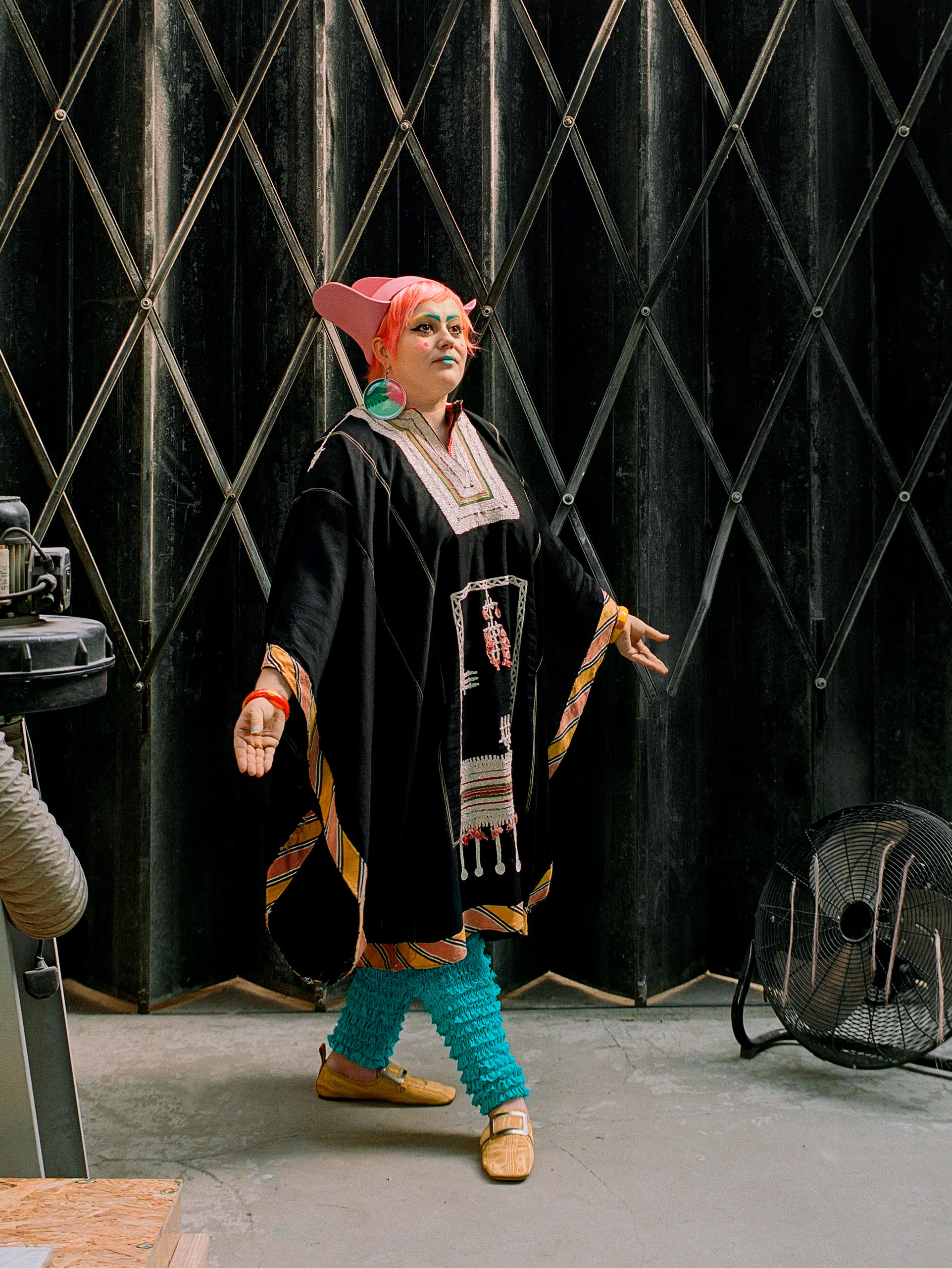
This period of sheltering at home has given Wood an opportunity to arrange and reflect upon the photographs and found objects she’s collected over her past years of travel—things she didn’t have time to process before. Her process, however, doesn’t involve reworking found objects in the Robert Rauschenberg sense. “I have an issue with being the one to smash the vase,” she says, “especially if it’s a really nice vase.” Instead, Wood references, creating work that has a conversation with something external. “There’s too much of a hoarder in me,” she says. “I can’t deal with the idea of damaging or using the original. Most of the time [my work] is a mix between things I’ve been able to physically take away with me and things that are too big for me to steal.”
In my head, I’m picturing concept boards akin to the evidence walls popularized by British crime dramas. If I were to decode the clues pinned to Wood’s wall of references, could I point to its corresponding piece? Would I draw a line between her Bauhaus jubilee weaving motif and the ’60s scoubidou bottle sitting on the shelf below? She understands the connections, but you and I might not. Which, she explains, is kind of the point. “I try, where possible, to find that really nice balance, where there’s just a taste of something. If it’s a reference that the viewer also has a connection to—because it’s something that their nan had or there’s a cultural reason that it works strongly for them—then it’s there for them to go deeper into themselves. I enjoy when people fill in the blank spaces with what they’re seeing. Sometimes it will be something that I’ve seen in it, or sometimes it won’t.”

Right: paper model of handles from Toothpaste project for Valextra.
Actually seeing these projects—experiencing them in their intended physicality—is a luxury that Wood acutely recognizes. How can you escape mass production while meaningfully connecting with a large volume of people? “It’s a question that a lot of designers have to face,” she explains, “to not necessarily fill large, large, large dumpsters of landfill versus making something that doesn’t really exist outside of a niche world. A lot of my work plays between those two worlds.”
Sustainability is integral to her mandate as a maker—but consumption can be a sensitive subject for an obsessive collector like Wood. She gives herself a bit of an out, reasoning that, because the objects she collects are not new, she’s simply circulating things that already exist. Still, she sees value in letting go—something she’s been practising over these past few months. “It’s hard,” she admits. “You need to make space to grow, because if you get so stuck on keeping everything, layer on layer on layer, you kind of puff out like this,” she says, holding her hands out at arm’s length. “It makes it harder for you to connect back to what was there at the beginning.”
Although Wood has evolved as a maker over the years, there are, as with all of us as we age, “outfits and photographs that can be burnt,” she laughs. “I try to make the mistakes in the dressing up rather than in the final pieces.” She hopes that, across what will surely be a lifelong career, the products she designs maintain their relevance “because the aim of the work is to create something that has longevity.”

Stain, a teacup project Wood produced in 2006, provides an apt analogy for the designer’s long-term use ethos as over time, drinking from the porcelain cup, a pattern is revealed. The words she wrote to accompany the work referenced scratches on an iPod, an object that, at the time, was revolutionary: “iPods felt like these pristine, white cubes that you covered in so many layers of protection,” she says. “There was an idea that the use of them was a damaging force.” The reference might be dated, but the context of the work still stands—perhaps now more than ever. How do time and use add value to some everyday objects while rendering others obsolete?
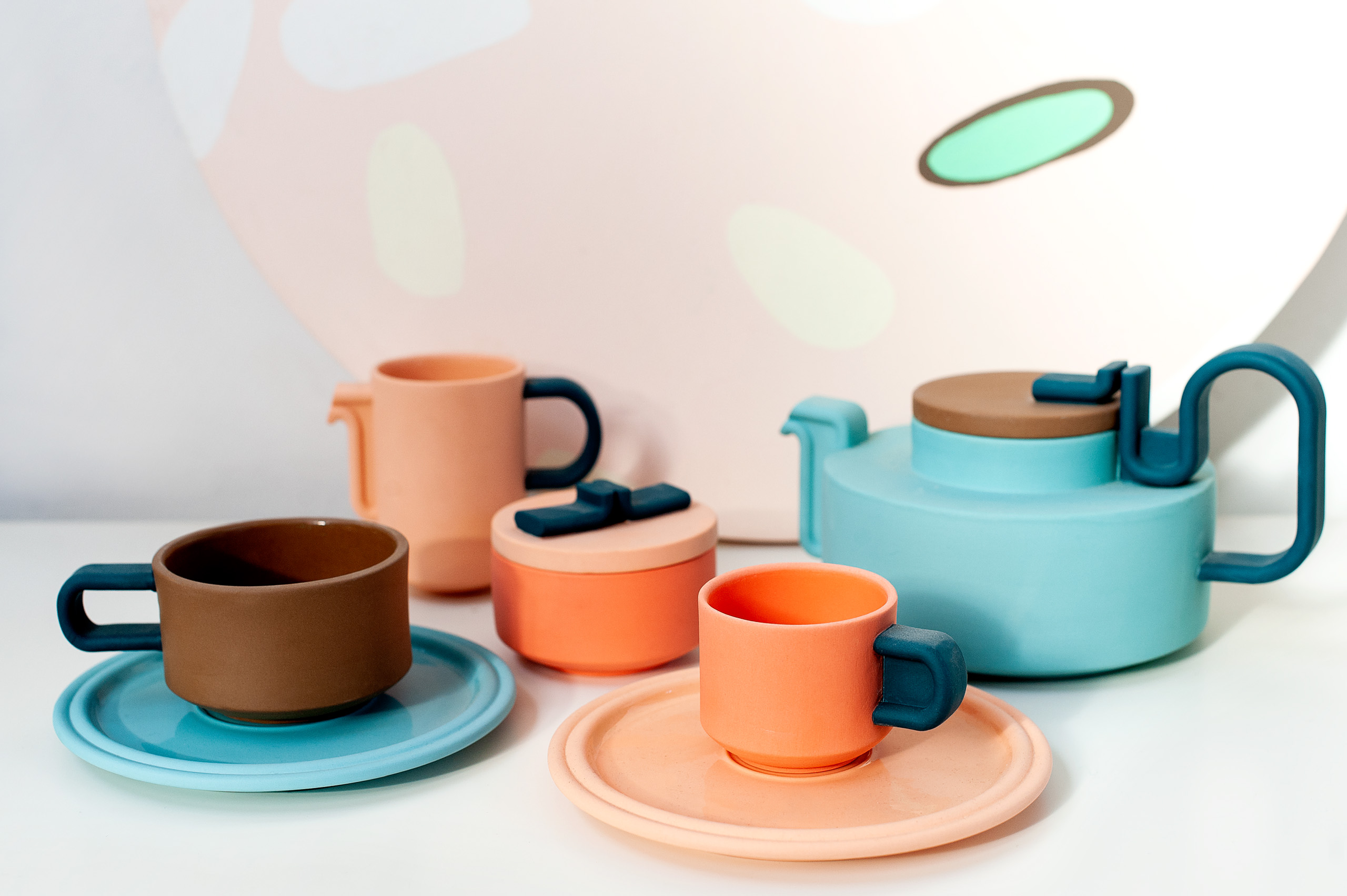
Tongue Tea Set for Rosenthal and detail of Mortadella (background) from Canapé project for Tory Burch.

